Initiative Empower
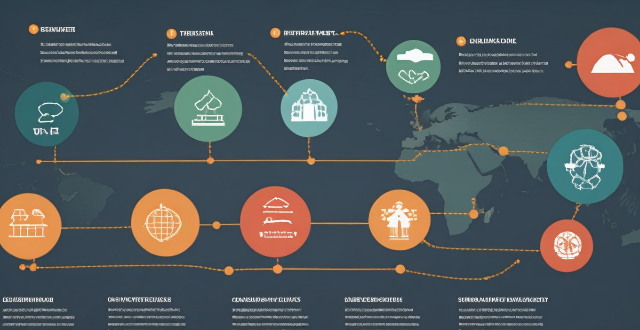
How does TCFD align with other global reporting initiatives like the Global Reporting Initiative (GRI) ?
The Task Force on Climate-related Financial Disclosures (TCFD) and the Global Reporting Initiative (GRI) are two global sustainability reporting frameworks that share several key points of alignment. Both provide guidelines for companies to report on their sustainability performance, with TCFD focusing specifically on climate-related financial disclosures and GRI covering a broader range of sustainability issues. They also emphasize the importance of materiality assessment, stakeholder engagement, risk management, and climate change disclosures in determining which aspects are most relevant to an organization's business model and strategy. By following both frameworks, companies can provide a more comprehensive picture of their sustainability performance and demonstrate their commitment to addressing climate change and other sustainability issues.

How can we empower women to lead the fight against climate change ?
Empowering women to lead the fight against climate change involves recognizing their unique perspectives, capabilities, and contributions to environmental conservation. This multifaceted approach includes: 1. **Recognizing Gender-Specific Impacts of Climate Change**: - Highlight the disproportionate impact on women through awareness and education campaigns. - Promote gender-sensitive climate policies that address specific needs and challenges faced by women. - Ensure gender-disaggregated data collection for a better understanding of climate impacts. - Support gender analysis in climate research to explore its effects on communities. 2. **Encouraging Women's Participation in Decision-Making**: - Increase representation of women who prioritize climate action in political involvement. - Foster women-led climate initiatives that are designed, implemented, and led by women. - Provide training programs that equip women with necessary skills for leadership roles. - Create networking opportunities for women to connect, share knowledge, and collaborate. 3. **Investing in Women-Centric Infrastructure and Technology**: - Train women in green technologies and renewable energy sectors for sustainable job opportunities. - Offer grants and loans to women entrepreneurs creating eco-friendly businesses. - Develop gender-responsive infrastructure projects like water systems and renewable energy setups. - Support women farmers through education on climate-resilient farming practices and access to resources. 4. **Amplifying Women's Voices in Climate Conversations**: - Ensure fair representation of women's voices in media coverage of climate issues. - Leverage digital platforms to amplify women's messages and campaigns related to climate change. - Support women-led grassroots movements focusing on local environmental issues. - Organize educational workshops in communities, led by women offering unique perspectives. By adopting these strategies, we can empower women, strengthen the fight against climate change with innovative solutions, and foster inclusive leadership.

What strategies have been successful in engaging men as allies in women-centered charitable initiatives ?
Engaging men as allies in women-centered charitable initiatives is crucial for achieving gender equality and empowering women. Here are some strategies that have been successful in engaging men as allies: 1. Educate and Empower: Provide information about the importance of women's issues and encourage active participation in discussions and events related to women's issues. 2. Highlight Mutual Benefits: Show how supporting women-centered initiatives can benefit everyone, including men, and share success stories of male allies. 3. Create Opportunities for Collaboration: Partner with male-dominated organizations and organize joint events or activities that bring together men and women to work towards a common goal. 4. Recognize and Reward Allies: Publicly acknowledge and thank men who support women-centered initiatives and offer incentives or rewards for their support. By implementing these strategies, we can effectively engage men as allies in women-centered charitable initiatives and achieve gender equality.

In what ways do women's empowerment initiatives contribute to community development ?
Women's empowerment initiatives are crucial for community development as they address gender inequalities and foster inclusivity. These initiatives benefit not only women but also have a positive ripple effect on the broader community, leading to more sustainable and equitable growth. Economic growth is achieved through increased participation in the workforce, entrepreneurship and innovation, and improved household economics. Social development is promoted through health and well-being, education, and gender equality. Political empowerment is enhanced through increased participation in decision-making and promotion of good governance. Environmental sustainability is ensured through resource management and climate action. Cultural preservation and exchange are enriched through artistic expression and cultural exchange. Women's empowerment initiatives are essential for comprehensive community development, addressing gender inequalities, promoting inclusivity, and paving the way for sustainable growth, social cohesion, and a brighter future for all members of the community.
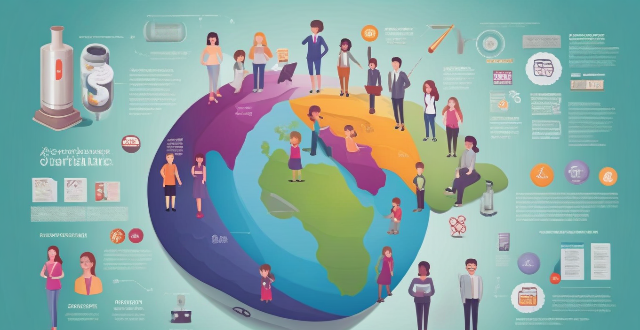
How have women's empowerment initiatives affected gender equality globally ?
The essay discusses the impact of women's empowerment initiatives on gender equality globally. The initiatives have increased access to education and training for women, leading to their active participation in public life. They have also provided economic empowerment through financial resources, microfinance loans, and entrepreneurship training programs, resulting in greater gender equality in the workplace. Health and reproductive rights have been improved through awareness campaigns and advocacy for policies supporting family planning and contraception. Finally, these initiatives have encouraged women's political participation, creating a more diverse and representative government. Overall, women's empowerment initiatives have played a crucial role in promoting gender equality worldwide.

What are some examples of successful citizen-led climate initiatives ?
Successful citizen-led climate initiatives play a crucial role in addressing the global climate crisis. These initiatives are often driven by grassroots movements, community organizations, and individuals who are committed to taking action against climate change. Examples of successful citizen-led climate initiatives include renewable energy cooperatives, community gardens and urban farming projects, bike share programs, climate education and advocacy efforts, and waste reduction and recycling programs. These initiatives highlight the importance of collective action and individual responsibility in creating a more sustainable future for all.

What initiatives are being taken globally to include children in climate action planning ?
Including children in climate action planning is crucial for several reasons. Firstly, it acknowledges their rights and provides them with a platform to voice their concerns about the environment. Secondly, it encourages intergenerational dialogue and collaboration, which can lead to more effective solutions. Finally, involving children in climate action planning helps them develop critical thinking skills, empathy, and a sense of responsibility towards the planet. Here are some initiatives that are being taken globally to include children in climate action planning: 1. UNICEF's Child-Friendly Cities Initiative 2. The Global Kids Climate Forum 3. The Youth4Climate Movement 4. The Fridays for Future Movement 5. The Climate Change Education Programme (CCEP) 6. The Earth Guardians Programme 7. The Eco-Schools Programme 8. The Children's Climate Prize 9. The Global Youth Biodiversity Network (GYBN) 10. The Youth Environmental Leadership Programme (YELP)
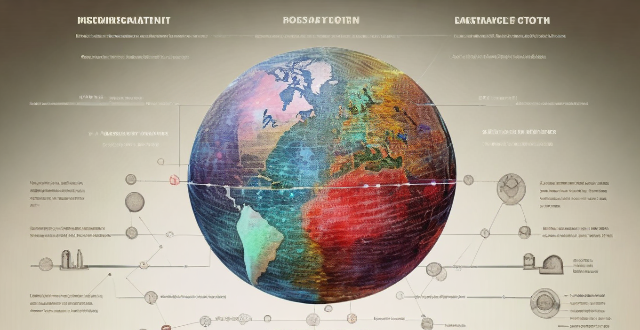
What are some successful examples of youth-led climate action initiatives ?
This article discusses successful youth-led climate action initiatives around the globe, highlighting examples like Fridays for Future, US Youth Climate Strike, and Earth Uprising. These movements have achieved significant milestones in raising awareness, inspiring policy changes, and fostering collective action towards addressing climate change.

What are some successful examples of green finance initiatives around the world ?
Green finance initiatives are gaining momentum as governments, financial institutions, and investors increasingly recognize the importance of addressing climate change and promoting sustainable development. Here are some successful examples of green finance initiatives around the world: 1. Green Bonds: The Climate Bonds Initiative (CBI) and World Bank Green Bonds are two successful examples of green bonds that have been issued to finance renewable energy projects, forest conservation, and other environmentally friendly initiatives. 2. Green Banks: The Connecticut Green Bank and New York Green Bank are two successful examples of green banks that focus on investing in clean energy and sustainability projects. 3. Green Investment Funds: The Parnassus Endeavor Fund and Calvert Social Investment Fund are two successful examples of green investment funds that invest in companies with strong environmental, social, and governance (ESG) practices. 4. Green Microfinance Institutions: Grameen Shakti and EcoZoom are two successful examples of green microfinance institutions that provide loans and other financial services to small-scale entrepreneurs who are involved in environmentally friendly activities. 5. Public-Private Partnerships for Sustainable Development: The Global Environmental Facility (GEF) and International Finance Corporation (IFC) are two successful examples of public-private partnerships that leverage private sector expertise and resources to achieve sustainable development goals.

What are some successful examples of environmental awareness programs around the world ?
Successful Environmental Awareness Programs Around the World: 1. **The Green Belt Movement (Kenya)** - focuses on environmental conservation through tree planting, empowering women, and promoting sustainable development. Over 51 million trees have been planted since 1977. 2. **Eco-Schools Programme (Europe)** - engages schools in promoting environmental sustainability among students. Over 10,000 schools participate in the program across Europe. 3. **Sea Shepherd Conservation Society (Global)** - protects marine life through direct action campaigns against illegal fishing and poaching. Successfully intercepted numerous pirate fishing vessels and raised global awareness about ocean conservation issues. 4. **Adopt-a-Minefield Programme (Cambodia)** - engages local communities to clear landmines and unexploded ordnance from rural areas. Over 1 million square meters of land have been cleared of landmines, providing safe access to agricultural lands for local communities. 5. **Recycle Now (UK)** - educates people about the benefits of recycling and reduces waste through a national recycling campaign. Recycling rates in the UK have increased significantly since the campaign's launch, diverting millions of tons of waste from landfills.
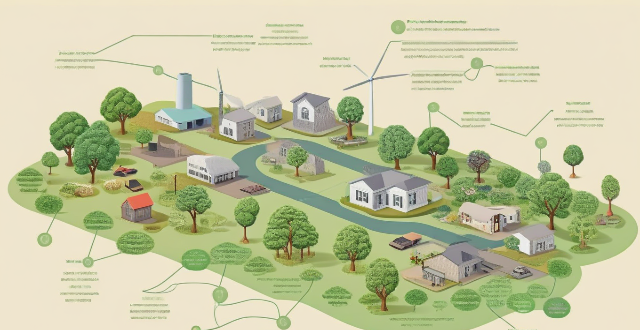
How can we address both climate change and poverty at the same time ?
Addressing climate change and poverty simultaneously requires a multifaceted approach that includes investing in renewable energy, promoting sustainable agriculture, implementing climate-resilient infrastructure, education and awareness, international cooperation, green economy initiatives, adapting to climate change, and social protection systems. By intertwining efforts to mitigate climate change with initiatives aimed at poverty alleviation, we can build a future that is both equitable and sustainable.

What are some examples of successful sports charity events ?
Successful sports charity events like the Nike Foundation's "Girl Effect" Marathon, The Komen Race for the Cure, and The Wounded Warrior Project's Carry Forward 5K have raised millions of dollars for various causes by combining the excitement of sports with philanthropy. These events engage participants in physical activity, raise funds and awareness for important causes, and create a sense of community among participants and supporters.

How can we measure the effectiveness of resource-efficient utilization initiatives ?
Measuring the effectiveness of resource-efficient utilization initiatives is crucial for organizations and governments aiming to reduce waste, save costs, and minimize environmental impact. This process involves evaluating the outcomes of various initiatives designed to optimize resource use and comparing them against predefined goals or benchmarks. Here's a detailed approach to measure the effectiveness of such initiatives: 1. Define Key Performance Indicators (KPIs): Identify relevant KPIs such as resource consumption rates, cost savings, waste reduction, productivity metrics, and environmental impact. 2. Establish Baseline Data: Gather historical information on resource consumption, costs, waste levels, and productivity prior to the implementation of the initiatives. Note any external factors that might affect the baseline data. 3. Implement Monitoring Systems: Set up data collection methods such as automated tracking using technology like smart meters or IoT devices, regular audits, and employee feedback. 4. Analyze Results and Compare to Baseline: Evaluate performance against KPIs by analyzing collected data and identifying trends and anomalies. Compare the post-implementation data with the baseline to gauge improvements or setbacks. Create charts and graphs to visually depict the changes over time. 5. Report Findings and Recommendations: Compile detailed reports outlining the findings from the analysis phase. Based on the results, suggest adjustments to current practices or propose new initiatives. Share the reports with relevant stakeholders, including management, employees, and regulatory bodies. 6. Continuous Improvement: Iterate and optimize initiatives through a feedback loop mechanism for continuous feedback from all involved parties. Revise strategies based on performance data and stakeholder input. Integrate lessons learned into long-term sustainability plans. In conclusion, measuring the effectiveness of resource-efficient utilization initiatives requires a structured approach that includes defining clear KPIs, establishing baseline data, implementing monitoring systems, analyzing results, reporting findings, and committing to continuous improvement. By following these steps, organizations can ensure that their efforts to utilize resources efficiently are not only successful but also measurable and sustainable over time.

How do women-specific NGOs measure their impact on reducing poverty and inequality ?
This article explores how women-specific NGOs measure their impact on reducing poverty and inequality by focusing on key metrics such as economic empowerment, education and skill development, health and well-being, and gender equality and empowerment. It also highlights successful NGOs like Women's World Banking, Room to Read, and International Planned Parenthood Federation (IPPF) that use data collection tools to track progress towards their goals.

In what ways does education empower women socially and politically ?
Education is crucial for women's empowerment, enabling them to challenge societal norms and contribute more fully to society. It fosters increased awareness, improved socioeconomic status, and enhanced social relationships. Education also leads to greater political participation, policy influence, and promotion of gender equality. Overall, education enriches society by improving the lives of women and contributing to a more equitable world.

What role do schools play in educating children about their rights in the context of climate action ?
Schools play a crucial role in educating children about their rights, especially regarding climate action. They are responsible for providing academic knowledge and shaping the values, attitudes, and behaviors of future generations. In the face of the climate crisis, schools have the opportunity to empower students by teaching them about their rights and responsibilities related to environmental protection. The importance of climate education includes raising awareness and understanding, promoting rights-based learning, fostering responsibility and accountability, and developing critical thinking and problem-solving skills. Integrating climate education into the school curriculum involves a cross-curricular approach, project-based learning, extracurricular activities, community engagement, and implementing green school initiatives and supportive policies. By doing so, schools can empower students to become informed, responsible citizens who are equipped to tackle the climate crisis head-on.

What are some successful examples of climate change education programs in schools ?
Climate change education is becoming an increasingly important aspect of the curriculum in schools around the world. Here are some successful examples of climate change education programs: 1. The Climate Change, Energy and Sustainability (CCES) program is a comprehensive educational initiative that aims to teach students about climate change, energy production, and sustainability. Students who participate in the CCES program have shown significant improvements in their understanding of climate change and its impacts on society and the environment. They also demonstrate increased awareness of sustainable practices and energy conservation. 2. The Cool School Challenge is a global competition that encourages schools to reduce their carbon footprint by implementing energy-saving measures and promoting sustainable behaviors among students and staff. Schools participating in the Cool School Challenge report reductions in energy consumption, waste generation, and greenhouse gas emissions. Additionally, students develop a sense of ownership and pride in their efforts to combat climate change. 3. The National Oceanic and Atmospheric Administration's (NOAA) Climate Stewards Program is designed for high school students interested in pursuing careers related to climate science or environmental policy. The program provides opportunities for hands-on research experiences, mentorship from climate experts, and participation in scientific conferences. Students participating in the Climate Stewards Program gain valuable insights into the complexities of climate science and develop skills that are highly sought after by universities and employers in related fields. 4. The Global Classroom Initiative is a collaborative project between schools worldwide that focuses on sharing knowledge and resources related to climate change and sustainability. Through video conferencing, online forums, and joint projects, students from different countries learn from each other and work together to address global challenges. Students involved in the Global Classroom Initiative develop cross-cultural communication skills and a deeper understanding of the interconnectedness of climate issues across borders. They also become more engaged with global citizenship and feel empowered to make positive changes in their communities. 5. The Eco-Schools Programme is an international program that encourages schools to implement environmentally friendly practices such as reducing waste, conserving water, and using renewable energy sources. Schools earn eco-flags for achieving certain benchmarks and can participate in regional and national competitions. Schools participating in the Eco-Schools Programme report significant reductions in their carbon footprint and improved overall environmental performance. Students also develop critical thinking skills and a sense of responsibility towards protecting the planet.

How can women improve their leadership skills ?
The article outlines strategies for women to enhance their leadership skills, including self-awareness and confidence, continuous learning, effective communication, emotional intelligence, building relationships, and taking initiative.

What are some successful examples of sustainable development projects ?
Successful sustainable development projects aim to meet the needs of the present without compromising future generations. Examples include the Great Green Wall for the Sahara and the Sahel Initiative, the Danish Wind Energy Revolution, Solar Power in India, Copenhagen's Bike Culture, and Renewable Energy in Costa Rica. These projects focus on balancing economic, social, and environmental considerations and demonstrate positive impacts on both the environment and society.

What are some successful examples of biodiversity restoration projects ?
This article provides examples of successful biodiversity restoration projects, including the Great Green Wall Initiative in Africa, the Mau Forest Restoration Project in Kenya, the Wolong Giant Panda Reserve Expansion in China, the Coral Reef Restoration Program in the Philippines, and the Amazon Rainforest Conservation Project. These projects aim to restore degraded ecosystems through various techniques such as reforestation, reintroduction of native species, and habitat restoration, with benefits including improved livelihoods for local communities and preservation of biodiversity hotspots.
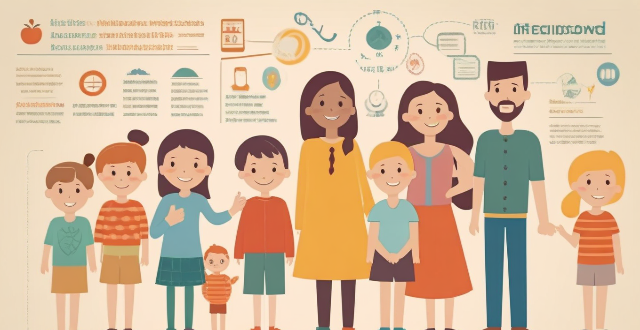
How can children be empowered to participate in climate activism while protecting their rights ?
This discussion explores strategies to empower children in climate activism while safeguarding their rights. The key strategies include education and awareness, safe participation, protection of rights, and community engagement. Education and awareness can be achieved through informative workshops and accessible information. Safe participation involves age-appropriate activities and adult supervision. Protection of rights includes respect for privacy, psychological support, and legal advocacy. Community engagement can be fostered through youth-led initiatives, networking opportunities, and family involvement. By focusing on these strategies, we can empower children to participate in climate activism while ensuring their rights are protected.

How does TCFD contribute to achieving the United Nations Sustainable Development Goals ?
The Task Force on Climate-related Financial Disclosures (TCFD) contributes significantly to achieving the United Nations Sustainable Development Goals (SDGs). The TCFD is a global initiative that aims to provide clarity and consistency in how companies report climate-related information. This initiative helps investors, lenders, insurers, and other stakeholders understand the risks and opportunities related to climate change. ### **How TCFD Supports the SDGs** #### **1. Promoting Transparency and Accountability:** The TCFD's framework encourages businesses to disclose their environmental impact, which aligns with SDG 12 (Responsible Consumption and Production) and SDG 17 (Partnerships for the Goals). By promoting transparency, TCFD supports businesses in becoming more accountable for their actions, thereby driving sustainable practices within industries. #### **2. Enhancing Risk Management:** Climate-related financial disclosures help identify and manage risks associated with climate change. This directly supports SDG 13 (Climate Action) by encouraging businesses to take proactive steps towards reducing their carbon footprint and adapting to climate change impacts. #### **3. Facilitating Investment in Sustainable Projects:** Through clear and consistent reporting standards, TCFD makes it easier for investors to identify companies committed to sustainability. This can lead to increased investment in projects that support various SDGs, such as renewable energy (SDG 7), clean water and sanitation (SDG 6), and sustainable cities and communities (SDG 11). #### **4. Driving Innovation:** By highlighting the need for companies to adapt to climate change, TCFD indirectly promotes innovation in clean technologies and sustainable business models. This aligns with SDG 9 (Industry, Innovation and Infrastructure) and SDG 12 by fostering innovative solutions that reduce environmental impact while maintaining economic growth. #### **5. Supporting Policy Coherence:** The TCFD's recommendations can guide policymakers in developing coherent policies that support both climate action and sustainable development. This aids in achieving SDG 17 by ensuring that policies are designed to support all SDGs simultaneously. ### **Conclusion** The Task Force on Climate-related Financial Disclosures plays a crucial role in advancing the United Nations Sustainable Development Goals by promoting transparency, enhancing risk management, facilitating sustainable investments, driving innovation, and supporting policy coherence. Through its work, TCFD helps bridge the gap between financial decision-making and environmental stewardship, making it an integral part of the global effort to achieve a sustainable future.

In what ways can service learning projects help students develop leadership abilities ?
Service learning projects enhance leadership skills in students by promoting responsibility, encouraging teamwork and collaboration, building self-confidence, cultivating empathy and social awareness, enhancing adaptability and initiative, developing organizational skills, and providing real-world experience. These projects benefit both the community and the students, offering opportunities for personal growth and practical application of classroom theories.

What are some successful examples of public health campaigns focused on increasing physical activity levels ?
Over the last decade, public health campaigns aimed at increasing physical activity levels have emerged as a crucial strategy in the global fight against sedentary lifestyles and their associated health risks. These campaigns, often initiated by governments, non-profit organizations, or private entities, employ a variety of tactics to encourage individuals to adopt more active lifestyles. Here are some of the most successful public health campaigns that have made significant strides in promoting physical activity: 1. **Let's Move!** - Launched by Michelle Obama in 2010, this initiative aims to solve the problem of childhood obesity within a generation by encouraging daily physical activity and healthy eating habits. The campaign has successfully raised awareness about childhood obesity and inspired many communities to take action. 2. **Active Healthy Kids Canada Report Card** - This annual report card provides a comprehensive overview of physical activity levels among Canadian children and youth. By collecting and analyzing data on physical activity levels, sedentary behavior, and fitness levels, the report card has increased awareness about the importance of physical activity and provided evidence-based recommendations for policymakers and practitioners. 3. **10,000 Steps Rockhampton** - A community-wide program in Rockhampton, Queensland, Australia, this initiative aims to increase physical activity levels among residents by promoting walking as a simple and effective form of exercise. Through various initiatives such as Walk to School programs, workplace challenges, and community events, the program has led to significant increases in walking rates among participants, resulting in improvements in overall health and well-being. 4. **Vermont's Physical Activity Guidelines for Americans Campaign** - This state-wide campaign in Vermont, United States, promotes the adoption of the Physical Activity Guidelines for Americans among Vermonters. Through educational campaigns, partnerships with local organizations, and community events focusing on the benefits of regular physical activity, the campaign has improved understanding and adherence to the guidelines, contributing to higher levels of physical activity among Vermonters. 5. **Copenhagen's Cycling Strategy** - A city-wide initiative in Copenhagen, Denmark, this campaign aims to make cycling a safe, attractive, and convenient mode of transportation for all residents. By expanding bike lanes, improving cycling infrastructure, and promoting cycling culture through events and education, Copenhagen has become one of the most bicycle-friendly cities in the world, with over 62% of residents commuting by bike daily. This has led to significant improvements in air quality, traffic congestion, and public health. These campaigns demonstrate the power of targeted, creative approaches in fostering a culture of physical activity and improving public health outcomes. By leveraging the strengths of their respective communities and focusing on sustainable, long-term changes, these initiatives serve as models for future efforts to combat sedentary lifestyles and promote active living.
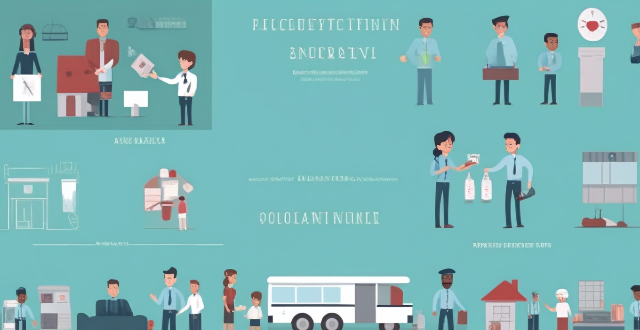
Can you provide examples of successful inclusive policies from around the world ?
Inclusive policies are designed to ensure equal opportunities for all individuals, regardless of their background or circumstances. Examples of successful inclusive policies from around the world include the Disability Rights Act in the United States, which protects the rights of individuals with disabilities; Iceland's Gender Equality Act, aimed at achieving full gender equality; India's National Rural Health Mission, a large-scale public health initiative to provide essential healthcare services to rural populations; and Canada's Affordable Housing Program, aimed at creating more affordable housing options for low-income households. These policies demonstrate the importance of addressing social inequalities and promoting inclusivity in various areas of society.

What are some examples of successful climate debt repayment programs ?
Climate debt repayment programs aim to address the disproportionate impact of climate change on vulnerable communities and countries. Successful programs include the Green Climate Fund, Global Environment Facility, World Bank's Climate Investment Funds, and African Development Bank's Africa Adaptation Initiative. These programs provide financial support and resources for adaptation, mitigation, and sustainable development projects in developing countries. Key features include funding for biodiversity conservation, land degradation prevention, private sector involvement, and disaster risk reduction.

What are some successful examples of sports-based rural revitalization programs ?
Sports-based rural revitalization programs have been successful in improving economic, social, and cultural conditions of rural areas through sports activities. Examples include China's Hometown Sports Project, India's Rural Sports Development Program, Australia's Grassroots Sports Development Program, and South Africa's Rural Sports Development Project. These programs focus on developing sports infrastructure, training talent, organizing events, and promoting community engagement, contributing to sustainable development and enhancing quality of life in rural areas.

What are the key factors that contribute to women's scientific literacy ?
Scientific literacy is crucial for personal development and education, enabling individuals to engage with their surroundings. For women, achieving scientific literacy can be influenced by various factors such as educational opportunities, cultural and societal norms, support systems and resources, workplace environment, policy and legislation, community and media representation, and personal development and self-advocacy. Addressing these key factors can empower women with the scientific knowledge needed to thrive in an increasingly technological world.

How can we use sports to promote gender equality and empower women and girls ?
Promoting gender equality and empowering women and girls through sports involves increasing visibility, ensuring fair representation, improving access and inclusivity, providing education and training, implementing policy and legislation, promoting health and wellness, encouraging economic empowerment, engaging the community, and fostering cultural change. These efforts aim to break down barriers, challenge stereotypes, and create opportunities for women and girls to thrive both on and off the field.